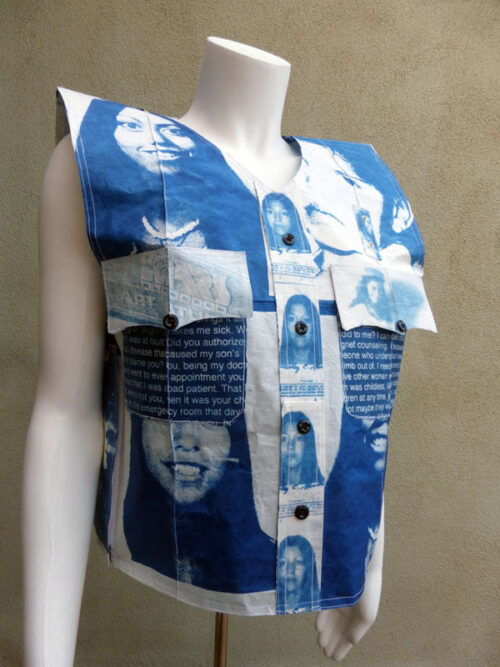Annie Lopez
Member Spotlight - August 2020
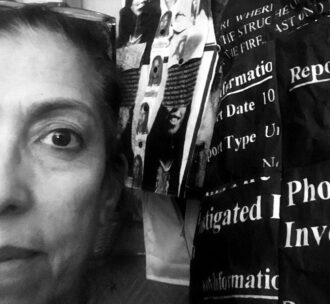
- Where did you grow up, and where do you live now?
I was born and raised in Phoenix, Arizona and I still live here. I am a fourth-generation Arizonan on my dad's side and second-generation on my mom's side. My people are from Mexico.
- Why did you join TPS?
I learned about TPS when I attended an SPE conference many, many years ago. I can't even guess how long I've been a member!
- Why did you become a photographer? / What do you like about photography?
I became a photographer for a few reasons. First, I took over as the family photographer when I was a kid. My family had a Kodak camera that you hold near your waist and look down into the viewfinder. My mother could never hold it still. I could, so I began documenting family events.
Second, when I was nine years old, I attended a summer day camp in town. A newspaper photographer arrived and asked to photograph me and three other girls around an artwork we as a group assembled. When the picture appeared in the newspaper the next day, I had been cut out. I never knew why. Because of that, I hate being photographed. I want to be the one controlling the image.
What I like about photography is being able to document without participating (I'm horribly shy). I also like that by choosing certain images, I am creating my own history - my version of events.
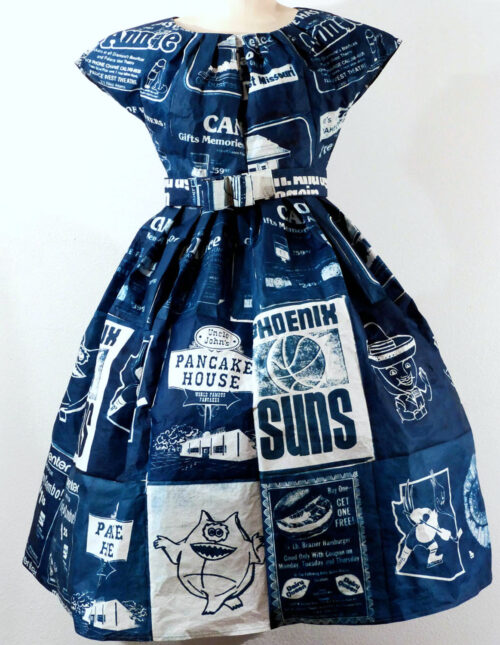
- Where or from whom do you find inspiration or motivation for your work? Do you have a mentor?
I am inspired by my grandparents and great grandparents. They motivate me to share their story, which is also part of my story. They were poor people who left behind photographs. Where did they get the money to buy a camera and develop and print photos? I'm grateful to them for those photos and that they labeled them with names and places. It made me want to know my history. I use family stories and the information from these photos in my artwork.
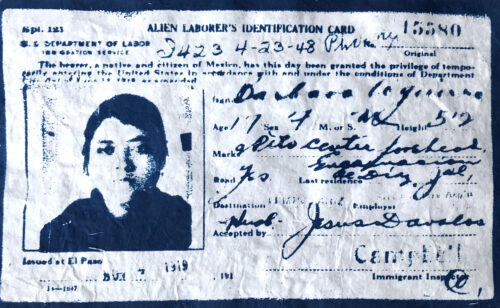
I never had a mentor. The closest I came to having a mentor was joining a local Chicano art group, Movimiento Artístico del Río Salado (MARS). When I began my art career, I was exhibiting black and white and color photographs which were nice, but the work said nothing about me as an artist. I learned from the other artists in MARS how to express myself in any weird way I wanted.
- How would you describe your photography and/or working process? What do you specialize in?
Part of wanting to express myself was learning cyanotype. I've used it since the mid-'80s.
What I like about cyanotype is I don't need a darkroom. I love the heat here in Phoenix (today the temperature will reach a high of 116!) and I have plenty of sun to print when I can. I like mixing the chemicals and painting it on the surface, and waiting for the unexposed solution to wash off the print. The process is a bit unpredictable, so every print is unique.
In 2007 I began using tamale paper (a paper used to wrap tamales) for the cyanotype prints. I use the tamale paper because it connects to me culturally. My mother and sisters and I used to make tamales for Christmas.
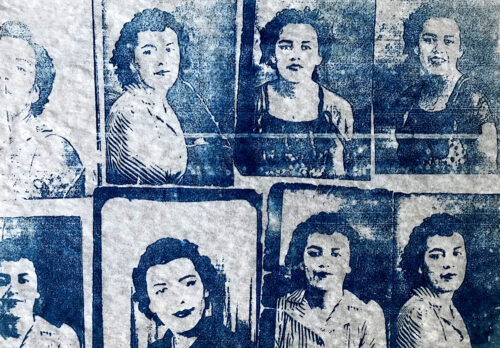
Although I primarily use the cyanotype process, I also create archival pigment prints for my Storybook Series. Those are family photographs with a story below them.
- How did you evolve from 2-D to 3-D printing? What is the inspiration for the clothing?
I began to make 3-D pieces as a solution to a museum show. In 2013, I was awarded a solo exhibit at the Phoenix Art Museum in a lobby area. The lobby is mostly windows, with very little wall space. I toyed with building an altar, or creating an installation, something I had plenty of experience with. In a conversation with the curator, I told her about the prints I was making, which were about some stressful events in my life. I said to her that I should sew my troubles into a dress. She told me to do it.
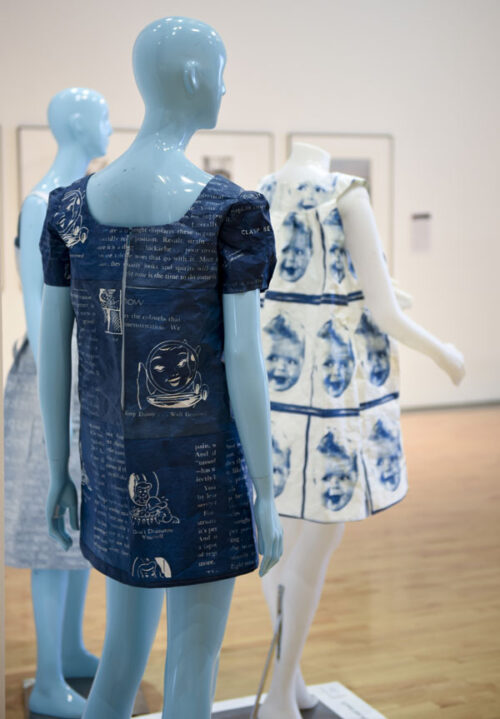
I've sewn since I was about eight years old. I made my own clothes when I was in elementary school (fourth to eight grades) and high school. Since then, it's only the occasional piece if I need something. I also did performance art and made a lot of costumes for 25 years.
I discovered that the tamale paper held stitching, and I've been making my sculptural pieces ever since. Each garment or dress tells a story in my place. The female form of the clothing stands in for me. From afar, you see a cute dress. Get closer and you can read the words and see the images. Every garment is made with the tamale wrapper paper.

When I started making the dresses, I decided to use second hand patterns and sewing notions. Only the thread is new. I looked for patterns that were popular during my formative years - the 1950s through the 1970s. Everything was left to chance, and I found many patterns that I had used but belonged to someone else. I purchased the patterns and notions (zippers, buttons, snaps, buckles) in thrift stores, antique stores, yard sales and estate sales.
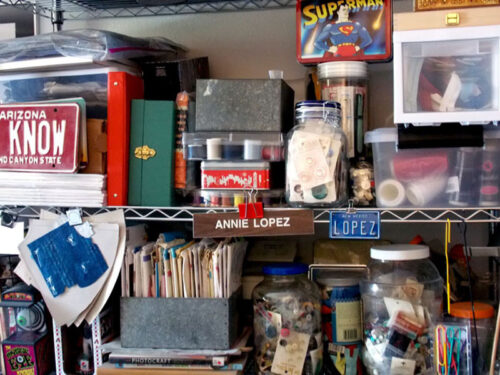
- When creating a dress, how does it come to life? Do you start with a vision in mind - the story?
I always have ideas and I write them down in numerous notebooks. I choose a story/event and work with that to make a piece with text and images. I am the subject matter. My experiences, family and history go into the work. I also use current and local events as they relate to me and my family.
Stories include my grandparents' naturalization, my father's Alzheimer's, former relationships (I've been married for 34 years, but I kept old break-up letters!), my aunt's everyday life growing up in Phoenix (when she died, I found a stash of letters she had written to her best friend who only lived a mile away, but this was 1940 in rural Phoenix), the stress involved in caring for a sick parent, my first grade report card where I got a "C" in art, and the arson fire that destroyed our family business - it was never investigated and the insurance company would not cover the loss.
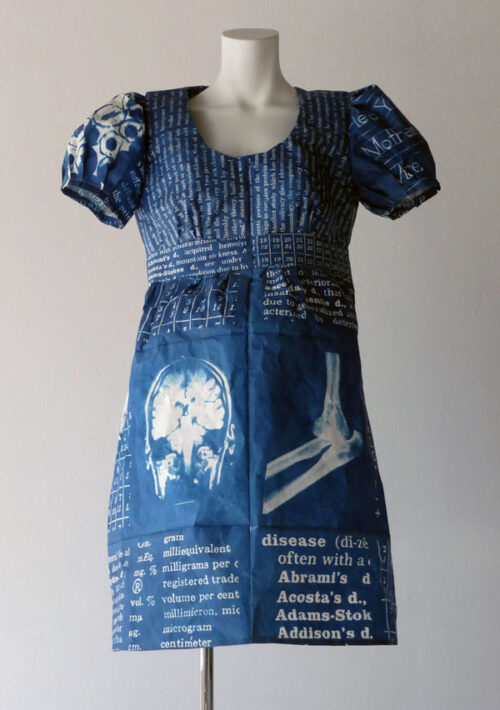
I try to incorporate a sense of humor in everything I make, even if it's a serious subject. Many of my titles reflect that. I always poke fun at myself. I do work about my family, but I'm the first to expose our flaws - there are so many.
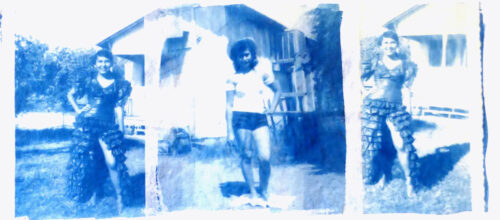
I use photocopied text in my work, but I've also used my own statements, as well as things people have said to me, handwritten letters to me and my aunt, my father's handwriting in the last year of his life while deep in his Alzheimer's, text messages and emails sent to me. I don't explain what the dresses are about, or even what my 2-D pieces are about. I like to hear how they are interpreted.
Once I know what the text and/or images will be, I print and print. I probably make two to three times the amount of prints that end up in the dress. The dresses need 20-40 prints of the size paper I use. When I know the story, I choose the style of clothing I want to use and that gives me an estimate of how many prints I may need.
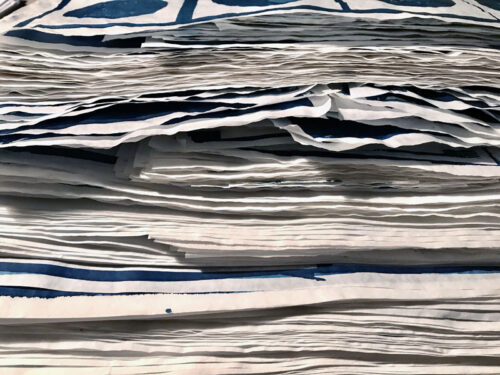
For instance, one dress titled "The Results of Mexican Food" was about the recipes that appear on products that call themselves Mexican food. In this case it was tamales in a can. I used a large '50s era house dress for the pattern. It's the largest size I've used so far - size 20. I was told one time by a female artist as we walked through a gallery before an exhibit we were planning, that "all Mexicans are fat." It came out of the blue. Being an artist, I wrote that down, knowing one day I would use it in my art.
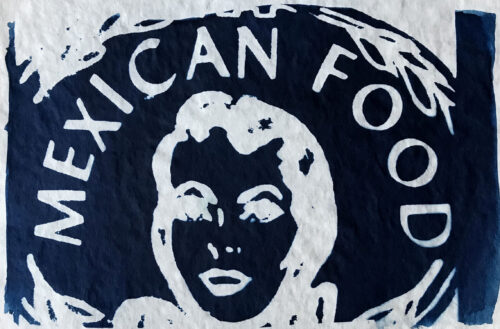
- How long does it take to make one garment? Are the garments wearable?
The entire process takes a very long time. I have to print, then stitch together to make my "fabric", then cut the pattern pieces out of that, then stitch them together to make the dress. Paper obviously does not move like fabric, so I have to make many modifications. It takes a month's worth of weekends to begin the process of making the prints, then printing more if I want to make a dress with a larger or longer skirt, then more weekends to sew it together.
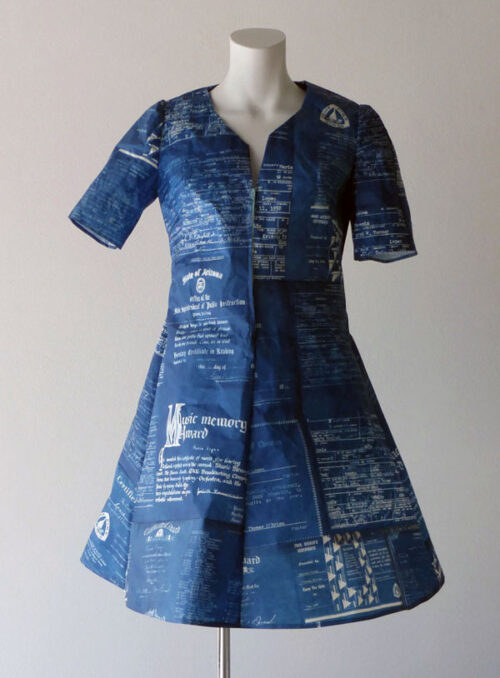
No, the dresses are not wearable. I often have to step inside them, if they are large enough (sizes are left to chance) to figure out how to piece it together. But they cannot be worn, unless you are very tiny. At least they are not meant to be worn. They are fragile, because they are made out of paper. If you crush the paper, it will eventually break down - it's just paper.
However, I have not had a problem with tearing. I store the garments in cloth garment bags to protect them. The pieces have traveled all over the country. I can throw them in my car to transport to galleries in Arizona, but if they need to go out of state, I ship them in their bags, in a large wardrobe moving box.
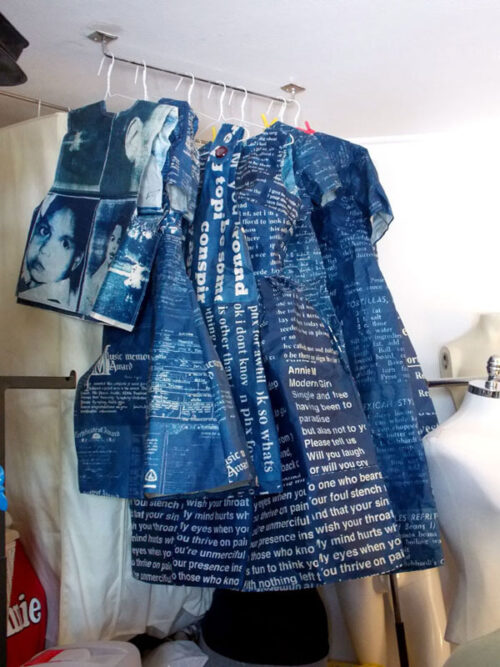
- What work are you most proud of?
Proud is not necessarily a word I would use about my artwork. I can say I was thrilled that as a native of Phoenix, the Phoenix Art Museum purchased a series of fifteen cyanotype prints titled, The Almost Real History of Art in Phoenix. They also have one of my dresses about my maternal grandparents, "Naturalized Citizens," in their collection. I love it when someone reaches out to me and tells me they can relate to the work I do, that they have a similar story.
I guess when a younger artist reveals they are influenced by my work and they will use art to tell their own story, that makes me proud.
- Do you have any words of wisdom for aspiring photographers/artists?
My advise to younger artists is to be honest and put themselves into the work. Tell your own story before you try to tell someone else's. Use a subject you are directly connected to. Don't limit yourself to traditional art materials. Find materials and processes that connect to you.
